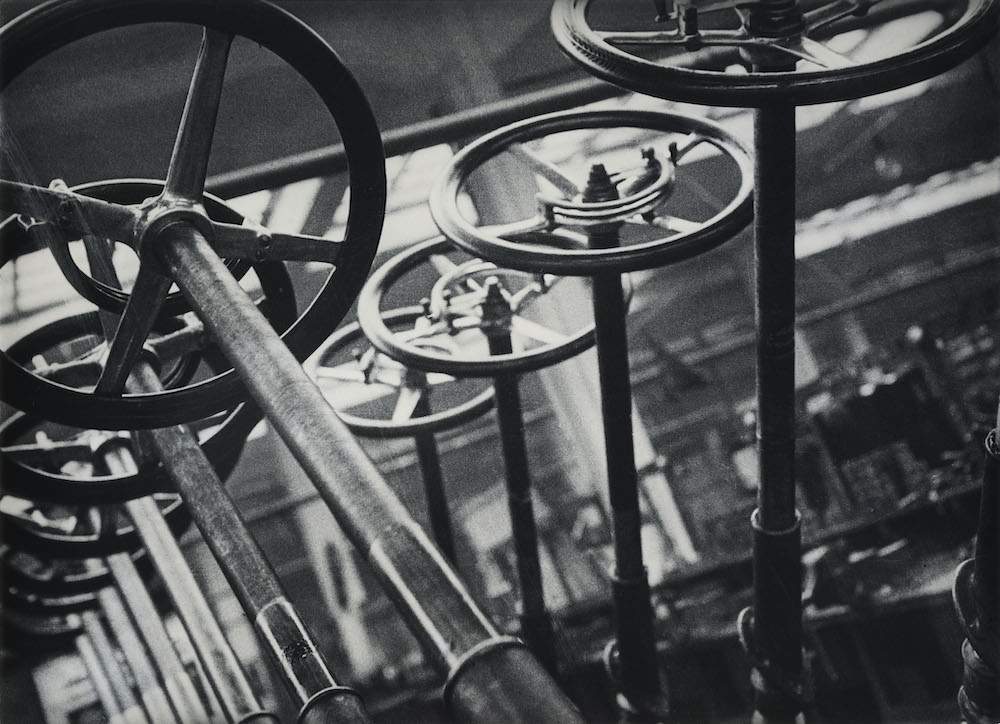After Mantua (as we reported here) and Palermo( newshere ), the exhibition Alexander Rodchenko. Revolution in photography has moved to Senigallia, where it will remain open until January 20, 2019.
The exhibition, hosted at Palazzetto Baviera, documents the rich photographic output of the Russian master, a leading exponent of the 20th century Russian avant-garde. A well-rounded artist, Alexander Rodchenko (St. Petersburg, 1891 - Moscow, 1956) in his long career devoted himself to painting, design, graphics, film and photography, opening up for each artistic field highly innovative avenues of change. His aesthetic imperative was based on the assumption “our duty is to experiment,” and it was with this slogan that in 1924 he decided to momentarily abandon painting for photography. The result, as Olga Sviblova, curator of the exhibition, puts it, was “a radical change in the way of conceiving the nature of photography and the role of the photographer. Conceptual thought was thus introduced into photography, no longer a mere reflection of reality but a tool for the visual representation of dynamic intellectual constructions.” Constructivism thus entered the world of photography, with what critics have called the Rodchenko Method, revolutionizing the way of understanding the image and making it become the visual representation of dynamic intellectual constructions.
In his practice, the artist sets up a documentary relationship with reality but alters its lens and gaze for an aesthetic rendering with abstract or strongly poetic traits: the diagonal composition he discovered, foreshortened perspective, enlargement of details, and shooting points from bottom to top and vice versa shaped an entirely unique style and visual language that has left its mark on the history of photography.
The rooms of Palazzetto Baviera will host a substantial core of photographs illustrating the beauty of modern architecture, the vitality of cities in the midst of urbanization in the 1920s and 1930s, and the fever of technology and modernization. The exhibition opens with the 1922caricature Self-Portrait, displayed alongside a body of portraits, in which friends and family also appear, and the famous photographs The Staircase (1930) and Girl with a Leica (1934), which fully embody the innovative principles of his “method.”
The exhibition itinerary continues with a selection of images on industrial reality collected in the short series: AMO Automobile Factory of 1929, dedicated to the automobile industry; MoGES ( Moscow Power Plant), which documents the new power plant erected in 1927 and the work of the workers. The verticality of modern buildings is captured in photographs of architecture and construction details, such as the famous Fire Staircase (with a man) from 1925. Spectacular parades of gymnasts and athletes are featured in shots that chronicle the dynamic spirit and nascent social cohesion of 1930s Russia.
Rodchenko’s new attention to detail allows him to highlight the harmony of architecture and new forms created by technology, illustrated in the exhibition with an image of the Shukhov Tower from 1929 and the Moscow Electric Bulb Factory series made at the turn of the 1920s and 1930s.
While The New Moscow is documented with photographs of the construction of the Culture Park and the paving of Leningrad’s streets, and with images of iconic buildings, such as the one designed by Ginzburg on Novinski Avenue and that of Mosselprom.
Journalistic-style photography is evidenced by the shots of photoreportages inside the editorial office and archives of the newspaper “Gudok” (1928) and that on the construction work of major engineering enterprises, particularly the construction of the canal linking the White Sea with the Baltic Sea. With the acrobatics of circus performers, an impressive photographic narrative, strongly representative of the spirit of the new times, concludes.
“After the success recorded by Roberto Doisneau’s exhibition,” says Senigallia Mayor Maurizio Mangialardi, “we are preparing to host a new extraordinary event featuring the works of one of the greatest masters of international photography. This event is the result of the fruitful collaboration that we have established for some time now with the Multimedia Art Museum and the Italian Cultural Institute of Moscow, leading already last year to the organization in the Russian capital of an exhibition dedicated to Mario Giacomelli’s poetics of landscape. An initiative, therefore, that should be included in the framework that today sees Senigallia boasting the title of City of Photography, a container of works, talents, passions, visions and organizational skills that allows us to dialogue with the most prestigious cultural poles at the international level and to insert ourselves in the network of cities of art. My heartfelt thanks go, of course, to the president of the Italian Cultural Institute Olga Strada and MAMM director Olga Sviblova, who will curate the Rodchenko exhibition.”
To learn more you can visit the website of the City of Senigallia.
Pictured: a photograph from the AMO Car Factory series.
 |
| The revolution of Alexander Rodchenko's photographs in Senigallia |
Warning: the translation into English of the original Italian article was created using automatic tools. We undertake to review all articles, but we do not guarantee the total absence of inaccuracies in the translation due to the program. You can find the original by clicking on the ITA button. If you find any mistake,please contact us.